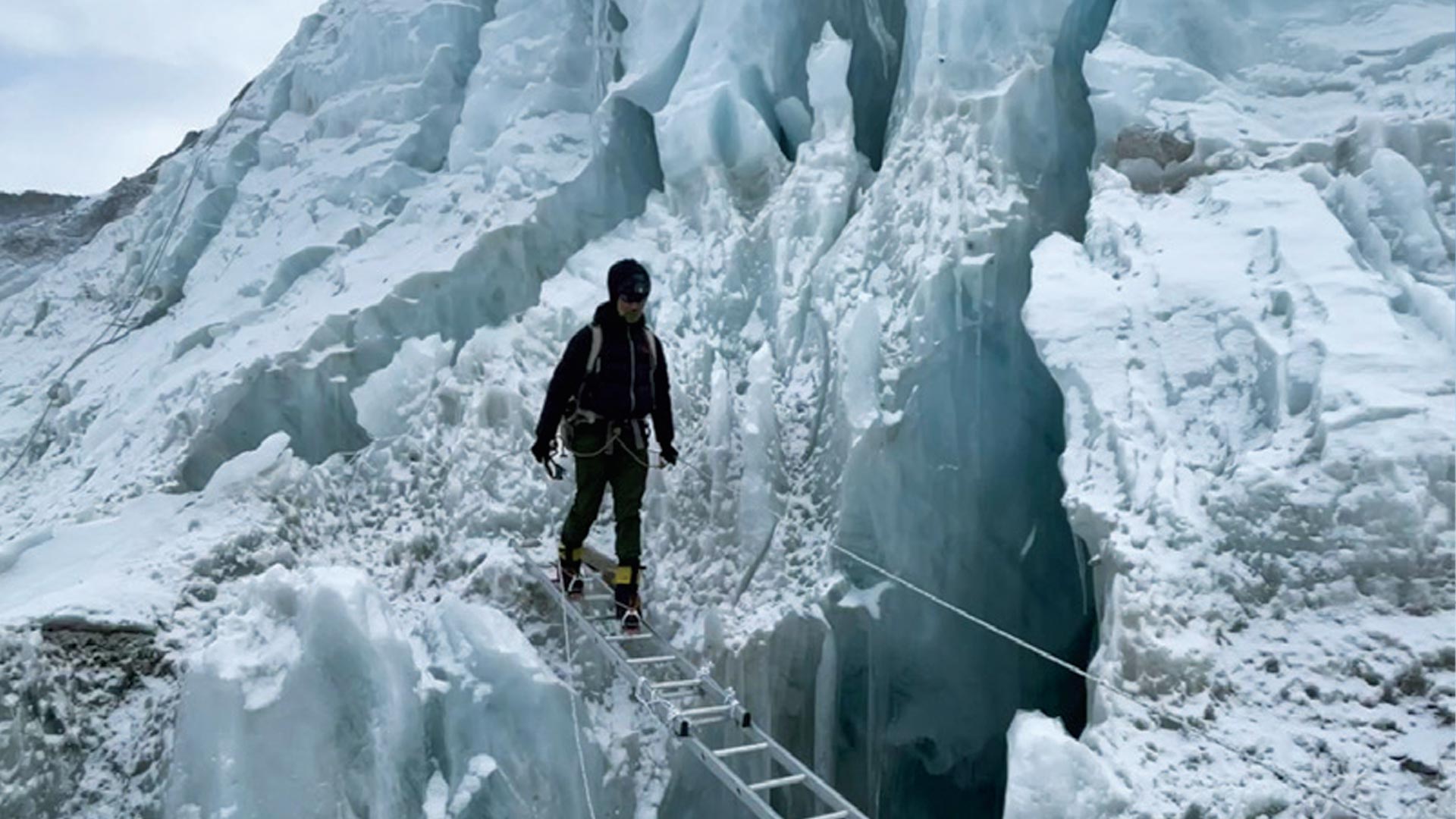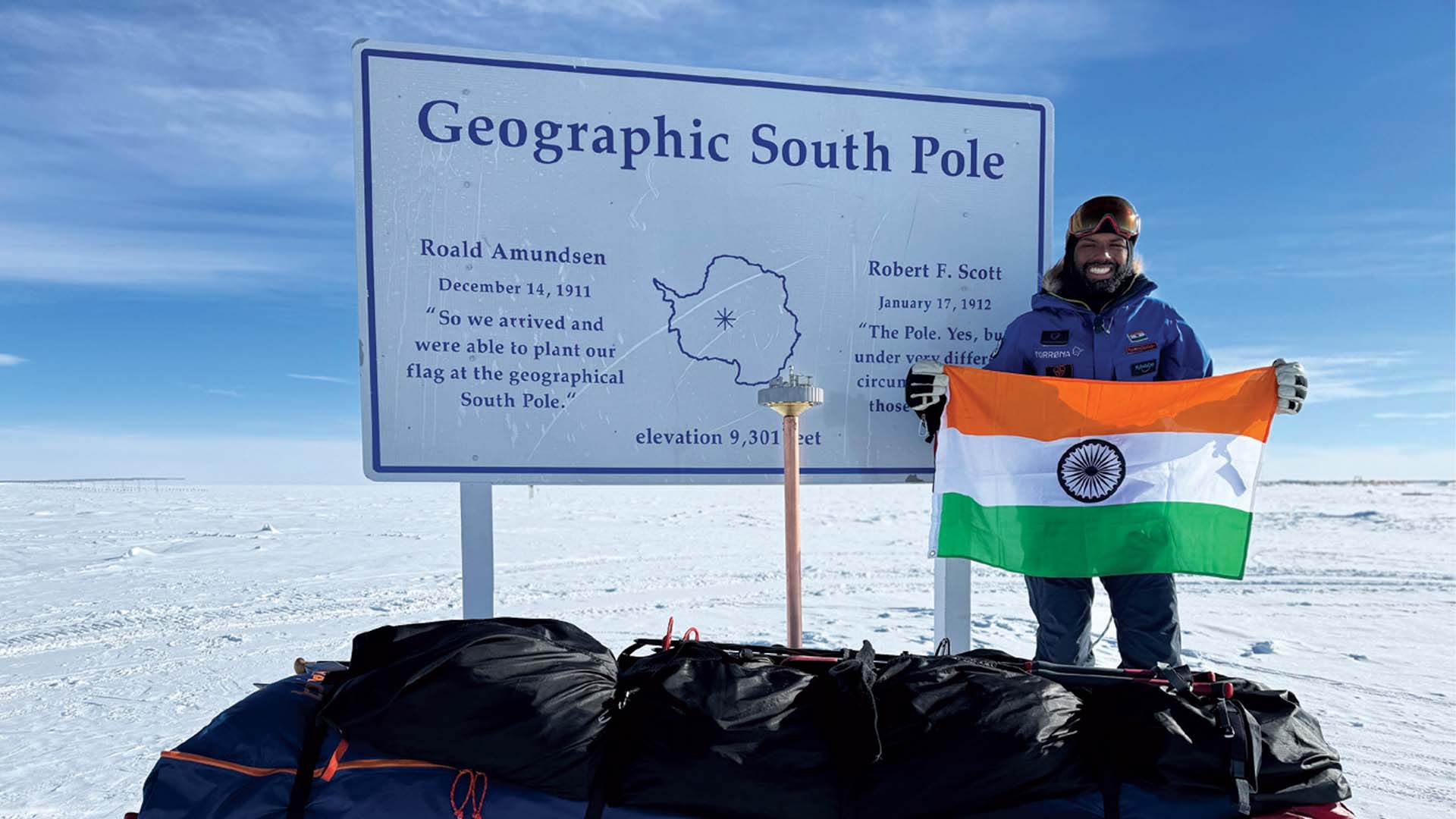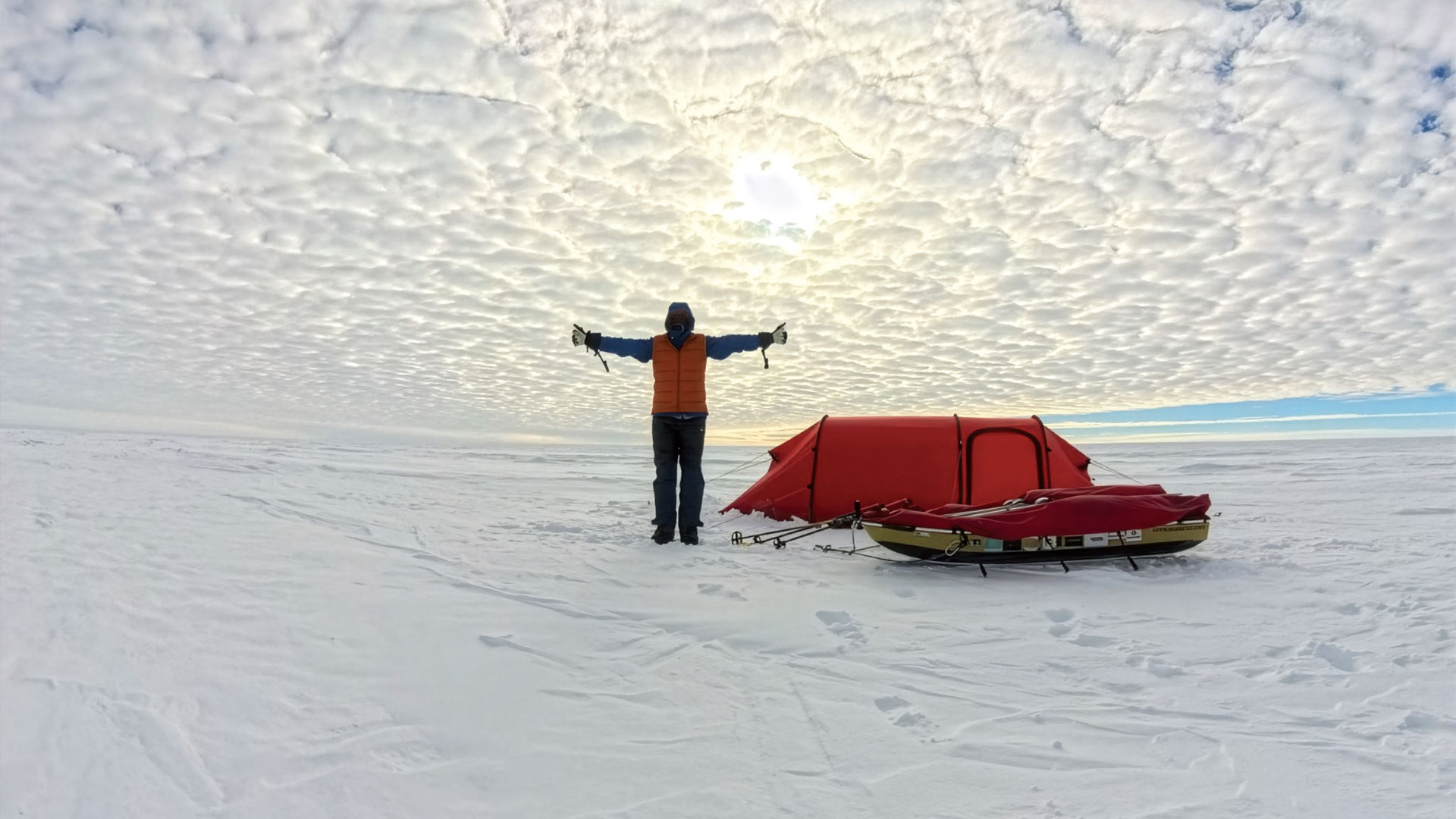Diaries of a Solo Adventurer
From scaling Mt. Everest to skiing solo across the South Pole, Satish Gogineni pushes the very edge of human endurance.
By Deepali Nandwani
As Satish Gogineni stood staring at the shifting white horizon of the South Pole—a featureless expanse of snow and ice, miles thick, stretching endlessly—he felt both humility and determination. "On a snow-swept plateau or scaling a peak, you constantly realise nature is far more powerful than you. You can’t fight it; you have to respect it, adapt to it. But along with respect, you need grit. Moments will come when everything in your body and mind wants to quit,” he says.
In January 2025, the Hyderabad-born adventurer became the first Indian to ski solo and unsupported to the South Pole. He completed a gruelling 1,133 km across Antarctica in 51 days. A high-altitude mountaineer, endurance athlete, polar explorer, and full-time adventurer, Gogineni is also the fastest Indian to summit Mt. Everest and Mt. Lhotse in under 19 hours. He is the second Indian to ski across Greenland’s ice sheet. Next on his agenda is a 2026 Antarctica expedition, which he describes as "harder, longer, and far more complex than anything I’ve ever done before."
His life as an adventurer began in his 30s in California. “It began with simple curiosity—hiking turned into summits, and summits turned into something deeper. Climbing Mount Whitney was the turning point. After that, I sought bigger challenges, trained seriously, and learned what it really means to move in the mountains. That climb showed me how much endurance is mental. It wasn’t sudden—it was a slow pull towards my purpose,” he says.

Moving in the mountains tests mental endurance; mountains strip away ego, says the adventurer.
What we don’t understand about mountains
Many view mountains as obstacles to be conquered. “They’re not obstacles; they’re teachers. The real summit isn’t the peak—it’s what the mountain reveals about you. Mountains strip away ego, expose fear, and demand patience. Sometimes the hardest lessons come when you have to turn back.”
Gogineni’s first polar exposure came after years of mountaineering. “I wanted a new frontier—colder, purer, more isolating. The poles held a mystery. I trained in Baffin Island and Greenland, learning to use polar skis and techniques for cold survival. When ALE (Antarctica Logistics Expedition) offered the chance, I had to try it.”

He faced storms, whiteouts, treacherous terrain, fatigue, cold, and hunger. What pulled him through was remembering why he was there.
Being there is surreal—extreme yet still. The geographic marker moves yearly because the ice sheet shifts. There’s no wildlife, no trees, no noise—just pure silence and -30°C winds. Even your breath sounds loud.
Satish Gogineni

Exploring the polar regions
His solo South Pole expedition, Project Spandana, pushed the edges of isolation and resilience. “It was more than adventure; it was carrying my mother’s and cousin’s memories, turning loss into something that could help others. Physically, I trained hard—dragging sleds, endurance work, cold prep. Mentally, I practiced solitude, stripped distractions, built comfort with silence, because many hours would be spent alone with just my thoughts.”
On the journey, he faced storms, whiteouts, treacherous terrain, fatigue, cold, and hunger. “Some days, progress felt impossible. What pulled me through was remembering why I was there. I broke the big goal into small wins: make camp, melt snow, stay warm, keep moving.”
A typical day: wake at 6am, melt snow, eat a calorie-dense breakfast, break camp by 8am, then ski for one hour, rest for ten minutes—repeat until 9 pm. “Each hour felt the same—just white horizon, wind, and skis.”
What solitude teaches? “You find more strength within you than you imagine. Stripped of distractions, you confront fear, doubt, and vulnerability—but also patience, clarity, and calm. Solitude became a mirror: I saw grief, perseverance, and a sense of peace I didn’t know I could hold.”

Gogineni is the first Indian to ski solo and unsupported to the South Pole.
What we don’t know about the South Pole
It isn’t just a point on the map. “Being there is surreal—extreme yet still. The geographic marker moves yearly because the ice sheet shifts. There’s no wildlife, no trees, no noise—just pure silence and -30°C winds. Even your breath sounds loud. And standing at the bottom of the earth doesn’t feel like conquering—it feels like being allowed in.”
The vastness and silence of Antarctica were overwhelming. “It was a stillness that forces you inward. It felt like standing inside a marshmallow, coming face-to-face with yourself. Peaceful, haunting, unforgettable.”


























